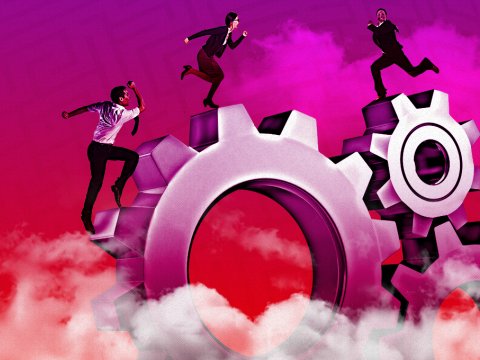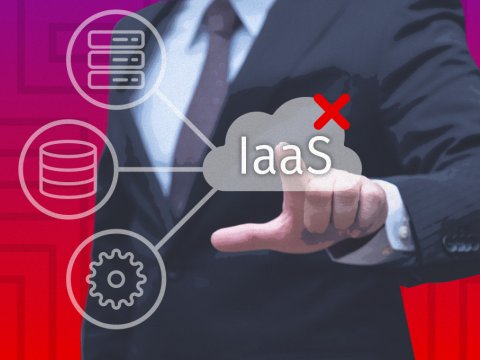Stop Overlooking The Cloud’s Biggest Benefit
The cloud is more than just a cost-effective way to outsource your old, on-premises data center.
Conversations about the business case for cloud adoption often begin and end with cost savings and scalability. But that sells the potential of the cloud short. The cloud is more than just a more cost-effective way to outsource your old, on-premises data center. It’s an entirely new way of approaching the software side of your business. And if you don’t realize that, you’ll miss out on the cloud’s biggest benefit: its ability to accelerate innovation.
Big Tech companies like Amazon, Spotify, and Facebook didn’t get where they are by focusing exclusively on keeping costs low. They did it by failing fast and bringing new ideas to market more quickly than their competitors — and cloud-native organizational structures, processes and software architecture enabled them to do so.
If you want to survive in an ever-changing world where Big Tech sets the pace, you’ll need your cloud deployment to turbocharge innovation for you, too. That means you can’t just migrate virtual machines (VMs) from your data center and call it a day. You’ll have to rethink how your teams work, how you test and deploy applications, and how you architect software. It’s a big ask — but it could be the difference between gaining the competitive advantage and being left in the dust.
People: Empower cross-functional teams
People are the first major enablers of innovation in the enterprise, but too many companies shackle them to outdated organizational structures that hold progress back. Enterprises often assign siloed tasks to separate teams instead of bringing everyone involved in a project together to collaborate in real time. And they weigh teams down with bureaucratic requirements that stall progress and discourage team members from taking responsibility.
To unlock innovation, it’s vital to build cross-functional teams and empower them to make decisions on their own authority. Amazon is a good example of how to do things right. Each service is run by a small, independent team that makes its own decisions and owns them. These cross-functional teams determine requirements by talking to customers directly and using that information to make their own technology choices. When something breaks, the team fixes it. That’s true empowerment — and it’s one reason Amazon innovates faster than its competitors.
Many things can hold an organization back from achieving change. Old habits die hard, and some operations run so lean there are few resources to spare for transformation. Whatever the barriers are to organizational change at your company, you’ll need to overcome them if you want to harness the full potential of cloud. Technology can only work as fast as the teams that run it.
Processes: Enable faster releases through automation
Empowering teams doesn’t just mean changing your organizational structure. It also requires you to adapt your processes to support agility and autonomy — particularly when it comes to developing, testing, and deploying new applications.
To keep up with the pace of innovation across industries, you need to release new code regularly, not just a couple of times per year. That means doing away with outdated change control processes that gather dozens of people for weekly meetings or create other barriers to faster testing and deployment.
But how do you loosen restrictions without sacrificing accuracy or taking on excessive risk? Automation is the key. By adopting a DevOps mindset that facilitates continuous integration and delivery (CI/CD), you increase speed while maintaining confidence in the code you’re rolling out. It enables you to build a lightweight process that people can still trust.
Software architecture: Keep pushing the envelope
Cloud isn’t just about migrating your existing applications. It also enables you to adopt two new, cloud-native software architectures that dramatically reduce costs and alleviate the operational burden on your IT team.
- Containerization — A container is an independent software package containing an entire runtime environment. Since multiple containers can run on a single OS kernel, they use resources more efficiently than VMs. Containerization is compatible with existing software engineering techniques, so it’s possible to implement when refactoring or re-platforming an existing application.
- Serverless — Software built on a serverless model only uses IT infrastructure for the milliseconds required to process a request, reducing idle time to zero and reducing operational burdens to a bare minimum. Because serverless is essentially an entirely new programming paradigm, it’s only possible to implement when you’re building an application from scratch.
When it comes to tech infrastructure, it’s always tempting to stick with what you know. But you won’t harness the full potential of cloud unless you push yourself to adopt modern architectures and reduce operational burden. However, be wary of endless refactoring. Change should serve a purpose and achieve results that are proportional to the effort put in.
There’s no time like the present for transformation
You don’t have to roll out all of these changes overnight. A full transformation to cloud-native organizational structures, processes, and software architectures could take years. But if you’re migrating systems to cloud, it’s important to start creating a roadmap for that transformation now — or risk falling behind the competition in the long term.

Cloud Native Application Security: Have You Covered All Your Bases?
About the Authors

CTO
Tolga Tarhan
As CTO of Rackspace Technology, Tolga Tarhan leads the vision, driving innovation, and strategy for our technology offerings. With more than two decades of experience leading product and engineering teams and as a hands-on technologist at heart, he brings unique insights to customers undertaking the journey to the cloud. As an early pioneer of cloud native thinking, Tolga's passion has driven our technical approach and transformed our customers into cloud native thinkers. Tolga continues to show thought leadership in the field through his extensive speaking engagements at AWS events, industry conferences, and educational groups. Tolga previously served as CTO of Onica, which was recently acquired by Rackspace Technology. Prior to that, he was a co-founder of Sturdy Networks and served as the CEO through to the acquisition by Onica. Tolga holds an M.B.A. from the Graziadio Business School at Pepperdine University.
Read more about Tolga TarhanRelated Topics



